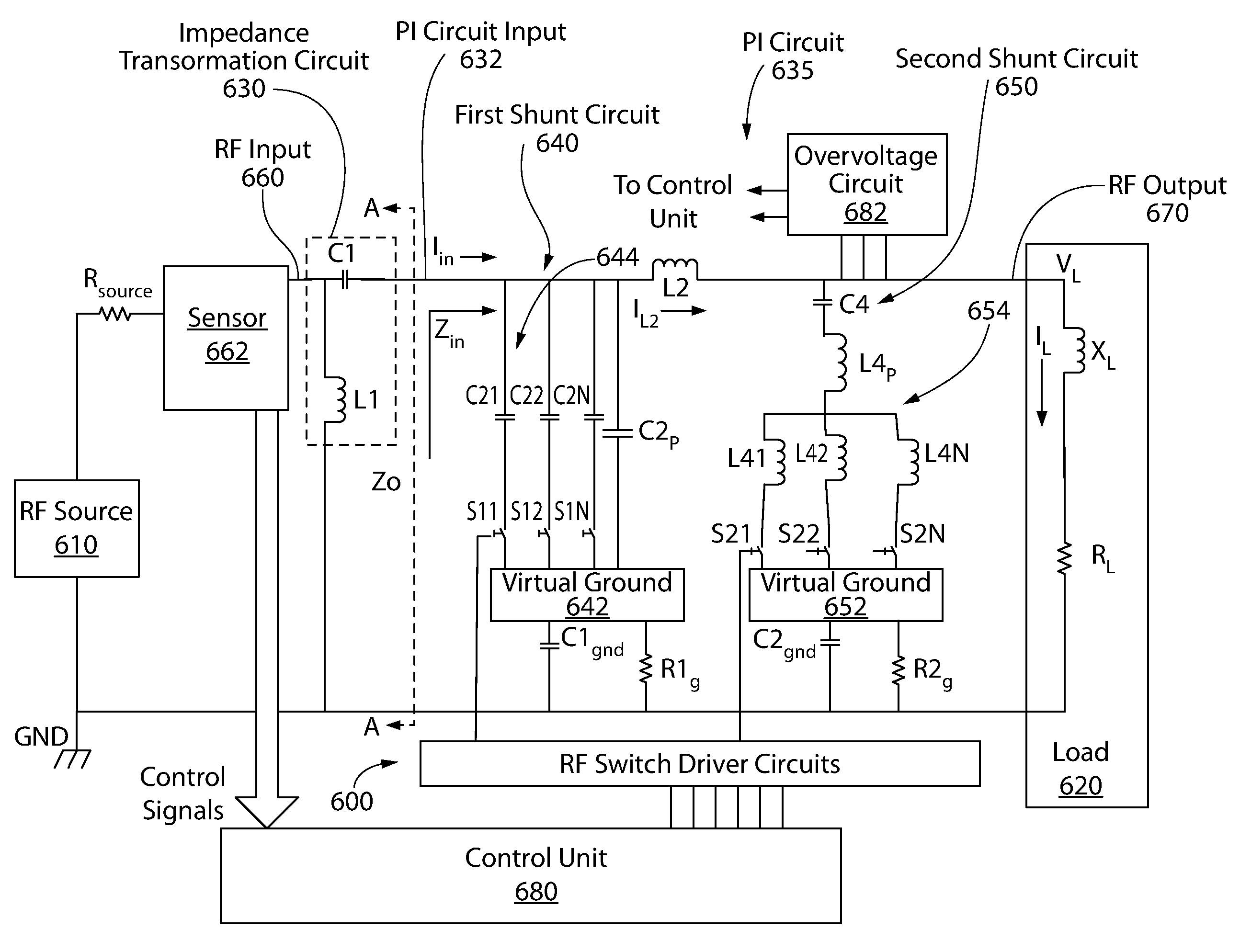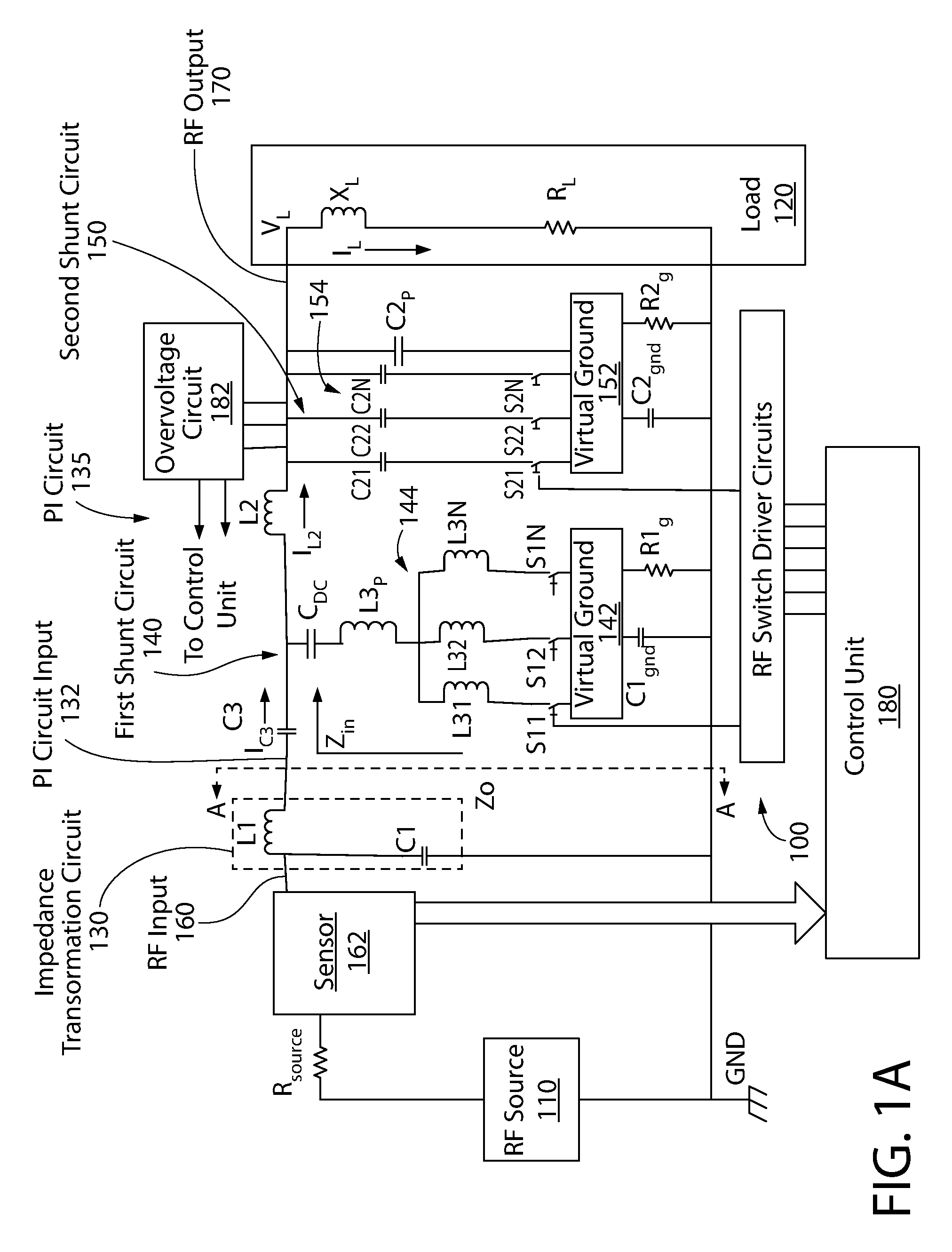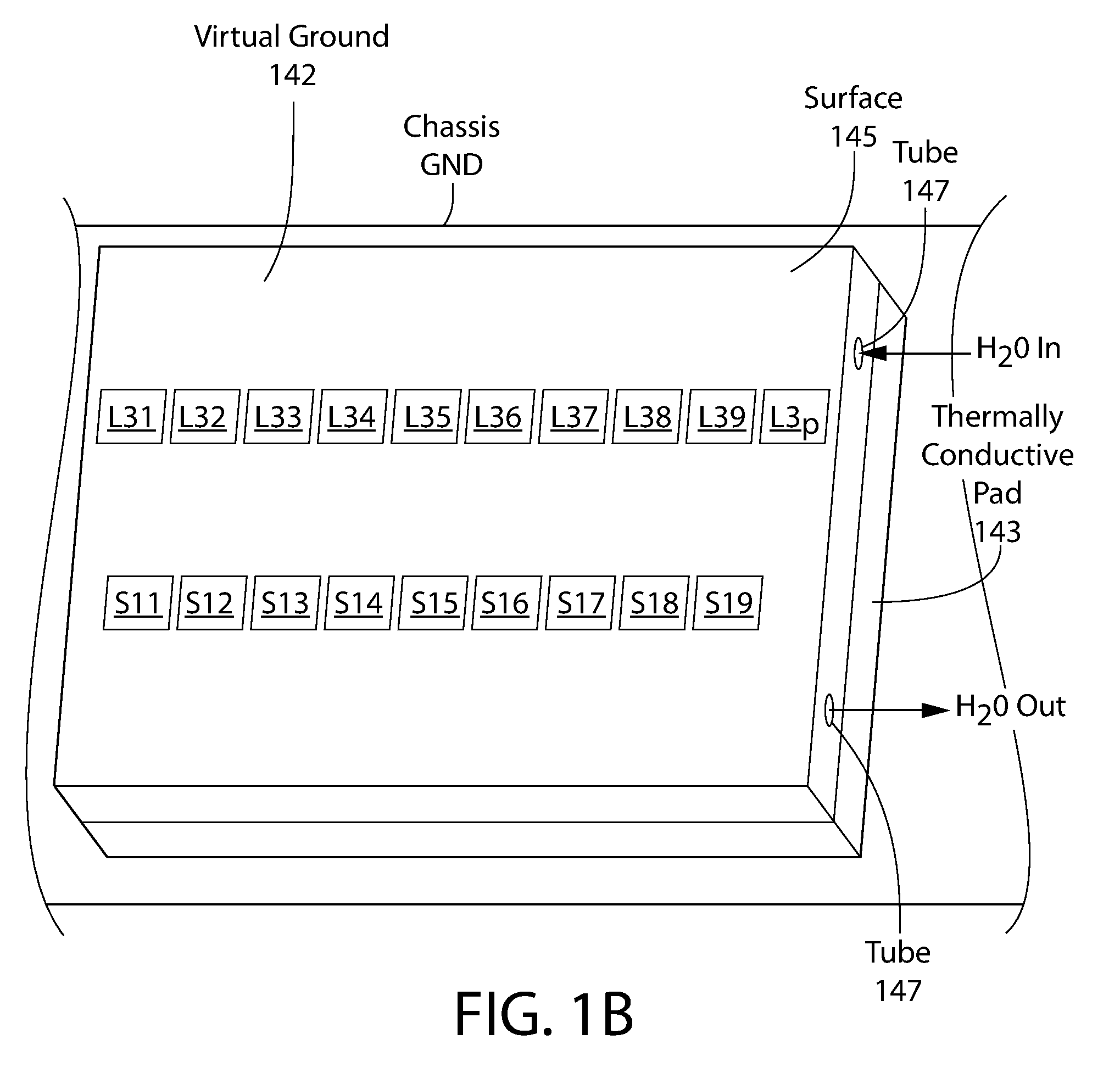RF impedance matching network
a technology of impedance matching and impedance matching, which is applied in the direction of resistance/reactance/impedence, multiple-port network, instruments, etc., can solve the problems of unstable fabrication process parameters, small feature geometries, and easy mechanical failure of vvc devices
- Summary
- Abstract
- Description
- Claims
- Application Information
AI Technical Summary
Benefits of technology
Problems solved by technology
Method used
Image
Examples
first embodiment
[0031]Turning in detail to the drawings, FIG. 1A illustrates an RF impedance matching network 100 according to the invention. The matching network 100 includes an RF input 160 configured to couple to an RF source 110, and an RF output 170 coupled to a load 120. A sensor 162 is coupled at the RF input 160 between the RF source 110 and the matching network 100. In the exemplified embodiment; the load 120 is a plasma chamber for semiconductor device fabrication. The semiconductor device can be microprocessor, a memory chip, or another type of integrated circuit or device. In other embodiments, the load 120 can be any load of variable impedance that can utilize an RF matching network.
[0032]In the exemplified embodiment, the RF impedance matching network 100 serves to help maximize the amount of RF power transferred from the RF source 110 to the plasma chamber 120 by matching the impedance at the RF input 160 to the fixed impedance of the RF source 110. The matching network 100 can consi...
second embodiment
[0065]FIG. 2 is a schematic representation of an RF impedance matching, network 200. As will be described, this embodiment uses variable capacitance components 244, 254 in both shunt legs. As in FIG. 1A, the matching network 200 includes an RF input 260 configured to couple to an RF source 210 and an RF output 170 configured to couple to a load 220, a transformation circuit 230, and a PI circuit 235.
[0066]The transformation circuit 230 is again coupled to the RF input 260 and configured to provide a transformed impedance that is less than the fixed source impedance. The transformation capacitor C1, however, is in series with the RF input 260, and the transformation inductor L1 is in parallel to the RF input and coupled to the chassis ground GND.
[0067]The first shunt circuit 240 is in parallel to the RF input 260. The circuit 240 includes a first shunt variable capacitance component 244 comprising (a) a plurality of first shunt capacitors C11, C12, C1N coupled in parallel, and (b) a ...
third embodiment
[0070]FIG. 3 is a schematic representation of an RF impedance matching network 300. In this embodiment, variable inductors 344, 354 are used in both shunt legs. As in the previous figures, the matching network 300 includes an RF input 360 configured to couple to an RF source 310 and an RF output 370 configured to couple to a load 320, a transformation circuit 330, and a PI circuit 335.
[0071]Similar to the embodiment shown in FIG. 1A, the transformation inductor L is in series with the RF input 360, and the transformation capacitor C1 is in parallel to the RF input 360 and coupled to a chassis ground GND. Also similar to FIG. 1A, the first shunt circuit 340 includes a first shunt padding, inductor L3P; a plurality of first shunt inductors L31, L32, L3N coupled in parallel to the first shunt padding inductor L3P; a plurality of first shunt switches S11, S12, S1N coupled to the plurality of first shunt inductors L31, L32, L3N and configured to connect and disconnect each of the plurali...
PUM
 Login to View More
Login to View More Abstract
Description
Claims
Application Information
 Login to View More
Login to View More - R&D
- Intellectual Property
- Life Sciences
- Materials
- Tech Scout
- Unparalleled Data Quality
- Higher Quality Content
- 60% Fewer Hallucinations
Browse by: Latest US Patents, China's latest patents, Technical Efficacy Thesaurus, Application Domain, Technology Topic, Popular Technical Reports.
© 2025 PatSnap. All rights reserved.Legal|Privacy policy|Modern Slavery Act Transparency Statement|Sitemap|About US| Contact US: help@patsnap.com



